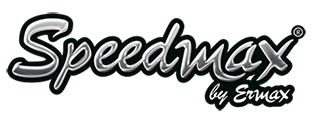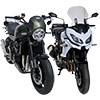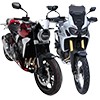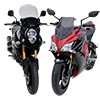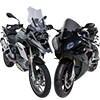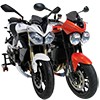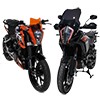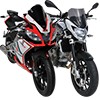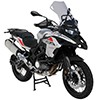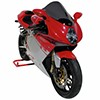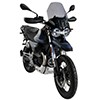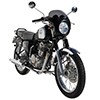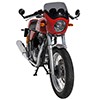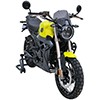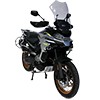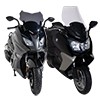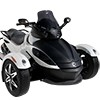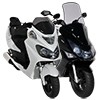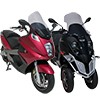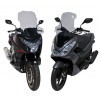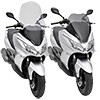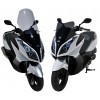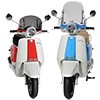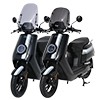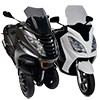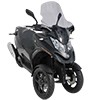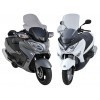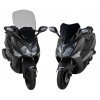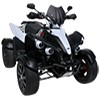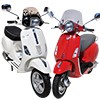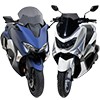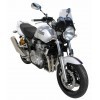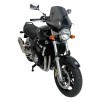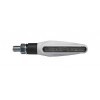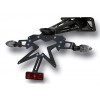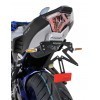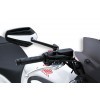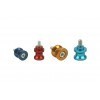In this article, we will try to give you some advice and remind you of the main good practices to adopt in order to simplify and streamline as much as possible the (many) administrative procedures that can sometimes resemble a real obstacle course for the uninitiated.
But we will see that in fact, with a little organization and method, there is nothing very complicated.
Here is the detailed checklist of the points to be checked:
I. WHEN YOU BUY YOUR MOTORCYCLE, MAKE SURE THAT THE SELLER GIVES YOU THE FOLLOWING DOCUMENTS:
*Examine the log book
The seller should have the log book (V5) and, if the bike is 3 years old or more, the seller has an MOT certificate. If he hasn’t then don’t even bother examining the bike. There may also be a service book.Once you’ve got the log book in your hands do the following
Check that it’s not a forgery by holding it up to the light to see the watermark
Make sure the frame and engine numbers match and are the same as in the log book
Make sure the colour of the bike is as stated in the log book. If the bike has been resprayed, you should ask to see the receipt for that job
Make sure the name and address on the log book is where the bike is now
Does the VIN in the document agree with the vehicle identification plate on the bike?
How many previous owners? (Is this still the first certificate)
*Examine the HPI Bike check
If you’re thinking of buying a used motorbike (or any vehicle) whether privately or from a dealer, check out its history firstly by getting your HPI motorcycle check. The HPI Bike Check report provides more information about the history of the motorbike, you’re looking to buy than any other check.
They will email you a comprehensive motorcycle history check.
- Checks on stolen/police interest
- Stolen log book check
- Write off/accident damage
- Mileage discrepancies
- Outstanding finance
- Scrapped by the DVLA
- Plate transfers
- Former keepers
- Full VIN/chassis check
- Make and model
- Engine number and size
- Colour and colour changes
- Imported or exported
- First date registered.
If there’s no watermark then don’t buy the bike.
If any of the other 3 are not as they should be there could be an honest reason. Ask, and if you aren’t happy with the answer, don’t buy it.
II. REGISTRATION:
The way a used vehicle is registered to you depends on whether it has a V5C registration certificate (log book)Vehicle has a registration certificate (V5C)The seller can register the vehicle to you online or by post.
*Register online
In that case, the seller have to register the vehicle to you online, then fill the green "new keeper" slip and give it to you, destroy th V5C. After that, DVLA will update the vehicle record immediately and they will aim to send out a new V5C to you within 3 to 5 days.
*Register by post
The seller can register it by post if they cannot register the vehicle online. In that case. The seller will need to:
- Complete section 2 if they have a new style log book (with multi-coloured numbered blocks on the front cover) or section 6 if they have the older style log book
- Sign the declaration in section 8 if they have the older style log book (you must sign the declaration too)
- Fill in the new keeper slip and give it to you
- Send the V5C to DVLA
If you do not get it within 4 weeks, complete form V62, application for a vehicle registration certificate’, you can download or get from any Post Office Branch, send it to DVLA with the new keeper slip given to you by the seller. If you do not send in the new keeper slip, you’ll have to pay a fee. Contact DVLA if you do not receive anything 6 weeks after sending in form V62.
If your vehicle does not have a registration certificate, DVLA advises that you should not buy a vehicle that does not have a registration certificate (V5C).
Register the vehicle in your name by using form V62 ‘Application for a vehicle registration certificate’. You’ll have to pay a fee. See the section above for how to get form V62. Contact DVLA if you do not receive anything 6 weeks after sending in form V62 and check your new registration certificate
When you receive your registration certificate, you have responsibility to check all the details are correct. If anything is incorrect, make the changes on the certificate and send it back to DVLA. You’ll get the replacement certificate within 4 weeks.
III. INSURANCE:
You are legally obliged to insure your motorcycle or scooter from the first use. To do this, contact your insurance company or make an online quote and compare offers. The rate will depend, among other things, on the level of coverage you want.It's important to know the actual value of the motorcycle you're insuring. If your vehicle is damaged in an accident, stolen or vandalized, the value of your bike has a lot to do with the amount of money you may receive as compensation. Ask your insurance provider how the cash value is calculated and if you have a disagreement, it's best to get that straightened out before you sign anything
